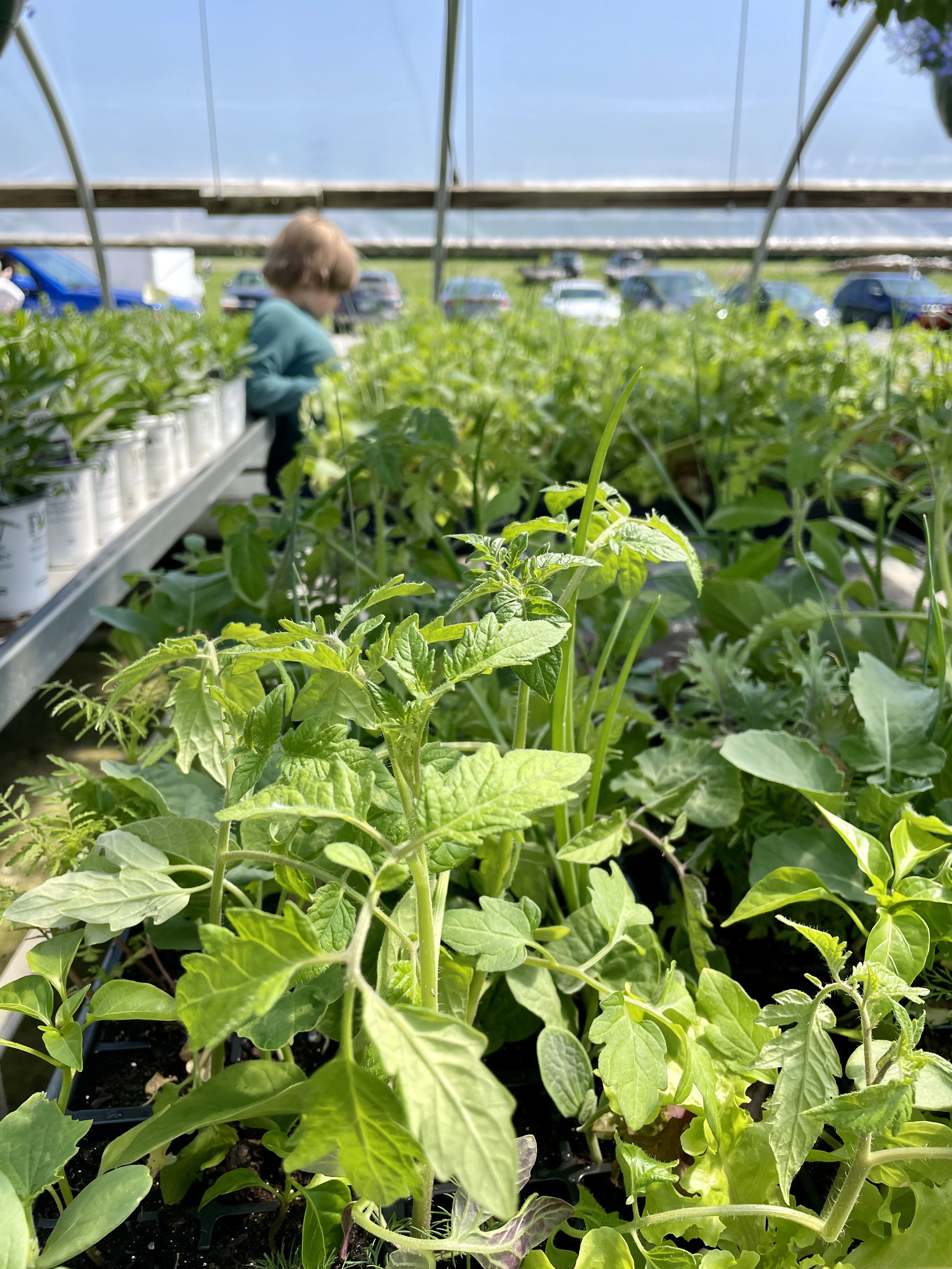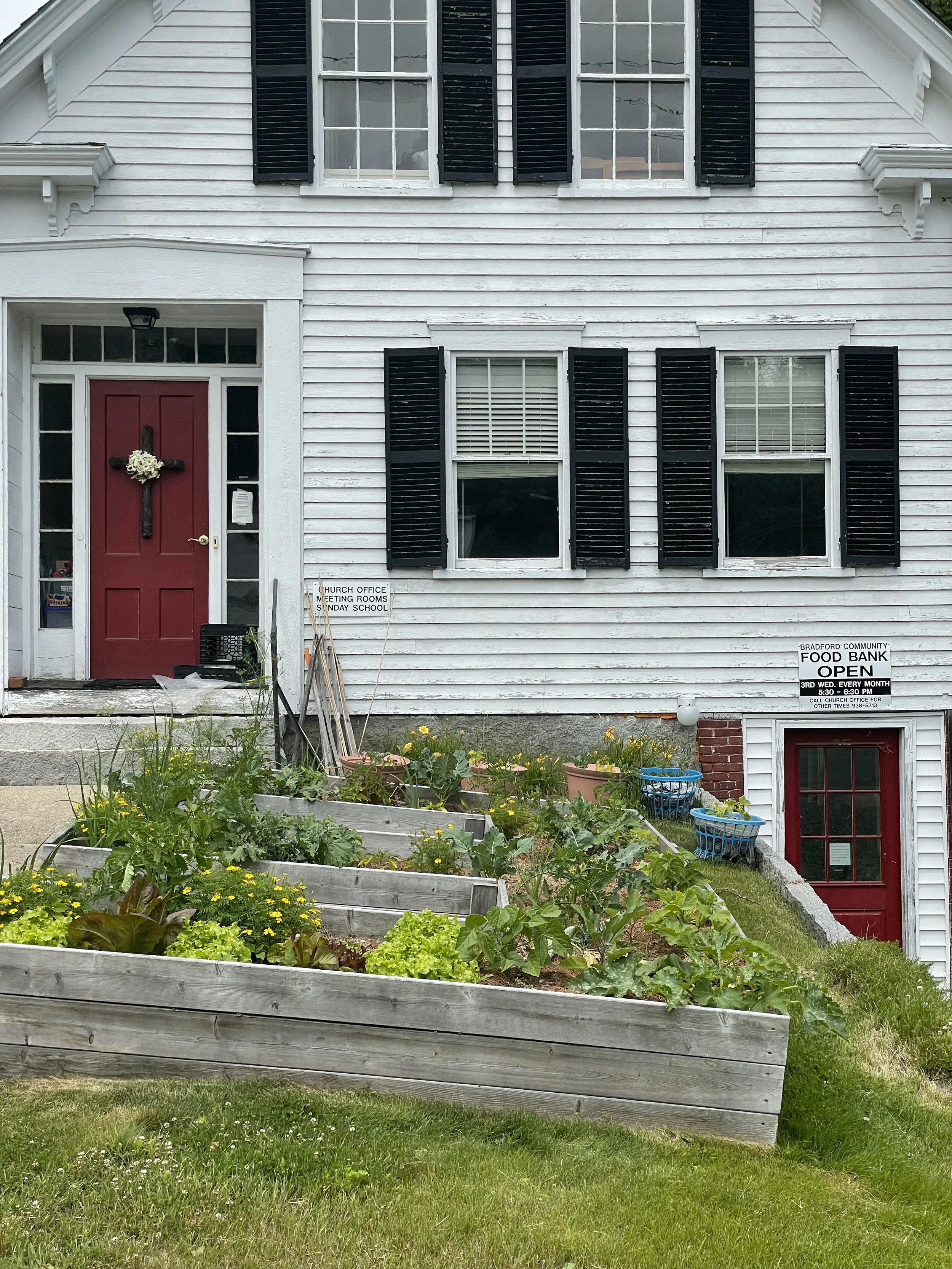When the pandemic hit in 2020, Kearsarge Food Hub (KFH) joined forces with community partners to co-create FEED Kearsarge - a shared initiative designed to support the community through turbulent times and beyond through Food Education, Expansion and Distribution.
One pillar of this collaboration is the Victory Garden Revival, which is a concept repurposed from World War II, when households started growing their own food to support food security for themselves when supply chains were precarious. Check out our blog post going more in depth on community gardens, including Victory Gardens, here.
We find ourselves in a similar situation these days, with supply chains in almost every industry disrupted by a global pandemic, and otherwise crumbling under the weight of unsustainable systems that don’t honor human and natural limits. Alas, with a warming planet, ongoing environmental degradation, political divide, and tangible transitions in the workforce, unsustainable supply chains will surely continue to produce increasingly unreliable results and empty shelves - not the least of which will be felt at the grocery store.
And so, the Victory Garden Revival seems most appropriate here in the Kearsarge region, and any community that’s interested in helping its members have more control over their own food supply and, beyond that, cultivating joy and community connections in a time of high stress.
And still, helping households and community garden sites grow more of their own food is easier said than done. Gardening can be cost effective, supportive to physical and mental health, and incredibly rewarding, and it also requires resources, learning, and time to all come together.
The Origin of Victory Gardens in the Kearsarge Area
In the spring of 2020, KFH, alongside Colby-Sawyer College, spearheaded the building of a garden at the Bradford Food Pantry, one of the local Victory Garden sites. Another was built at the college and this year in 2022, the Warner Connects Food Pantry went through a process of getting town approval and building gardens on site at the pantry.
Seedlings grow on Spring Ledge Farm for the 2022 Tray it Forward Program.
The Tray it Forward program, another pillar of FEED Kearsarge, just had its third round this past spring and distributed 400 seedling trays to neighbors experiencing food insecurity and community garden sites. These are all considered Victory Gardens, as well as any other home garden that’s producing food, or learning how to produce food, in any amount.
Helping home gardeners have a successful growing season requires not only distributing seedlings, but providing garden education and creating opportunities for neighbors to support one another through the growing season. So the FEED Kearsarge partners developed a weekly gardening newsletter and a Facebook support group to share knowledge and build community around gardening.
When it comes to supporting community garden sites, it’s important to not only share information and build community connections, but also facilitate collaboration amongst partners. In simplest terms, it can come down to addressing two primary questions:
1. What do we want to grow and why?
2. Who’s responsible for what at the garden?
Let’s explore these two core questions here using the examples of the three community victory garden sites here in the Kearsarge region.
1. What do we want to grow and why?
FEED Kearsarge partners have learned that when starting a community garden, It's helpful to identify the goals of the garden. One obvious goal is to produce food, but there are many other benefits to a community garden site. Gardens can provide education and exposure to gardening at a place like a food pantry, which might make clients more likely to choose fresh vegetables or consider starting their own garden. They can create opportunities to connect with nature, engage in self care, and be more environmentally sustainable, among many other benefits.
The Warner Connects Victory Garden
Amelia Gardner of Farmsteads of New England gives a tour of the Warner Connects Victory Gardens.
At the Warner Connects garden, Amelia Gardner of Farmsteads of New England is tending the beds along with other volunteer support. She says “Every garden is an opportunity for learning”. So, even if you’re not feeding the whole community with the garden, the opportunity for learning ripples out. There is no such thing as failing in the garden, Amelia believes. Only learning.
The Warner Connects Garden provides space to Tray it Forward recipients to garden, participates in the Abenaki Seeds Project (another collaborative initiative to grow heritage Abenaki seeds for the Native American community), and produces food for the pantry. With the goal of producing a steady from for pantry clients in mind, they’ve been focusing on radishes, which are quick to grow and can have several harvests throughout the season. Though they have had to trouble shoot with the very dry summer, mulching the beds seems to have helped.
The Warner Connects food pantry is open 4 days a week and is a very active food pantry. Having a garden here has proven to be quite the educational tool. Folks come and walk around the gardens, either experiencing them for the first time or, being gardeners themselves, are looking for inspiration or bringing questions. One thing they’ve noted would be helpful in guiding clients would be to have an experienced farmer or gardeners there during busy times to help answer questions.
Colby-Sawyer/Main Street New London Victory Garden
Professor Leon Malan gives a tour at the Colby-Sawyer College Victory Gardens.
At the Colby-Sawyer Victory Garden, they have a clear what and why. They plant seedlings from the Tray it Forward Program as well as the Abenaki Seeds Project to function as a hands on learning space for college students and interns.
They donate the harvest to either the food pantry there in town or the Abenaki Helping Abenki food pantry. As part of the environmental science department, Professor Leon Malan, who is an experienced farmer, oversees and manages the space. He’s able to work with his students, troubleshoot any problems in the garden, and maintain relationships with the folks at the food pantries.
Both Colby Sawyer and Warner Connects hosted tours at the gardens as a way to share their process and build community around gardening.
Bradford Food Pantry Victory Garden
Victory Garden at the Bradford Food Pantry
The Bradford Food Pantry Victory Garden has been through a trial and error process over the past three yers in figuring out exactly what to plant to have a successful growing season.
In the past few years, we’ve experimented with up to a dozen different kinds of plants in the space, all from the Tray it Forward program, which has proven to be too many in this small space. Laura, who manages the food pantry, along with Cheryl from the partnering church, has decided that fewer varieties of plants will be better for this small space.
Garden volunteer Patty is checking on the garden weekly and sending produce to the community FREEdge at Sweet Beet, a free fridge resource for folks to access 24/7.
Though this garden doesn’t produce a high volume of food, the goal is for it to support pantry clients with fresh veggies they will actually use. Having the garden right outside the pantry creates greater exposure to gardening for clients who use the pantry, and a source of joy for friends and neighbors that drive down main street who get to enjoy the garden's beauty.
2. Who’s responsible for what at the garden?
FEED Kearsarge Partners meet at the Warner Connects Victory Gardens.
This second question speaks to probably the most common pitfall of a community garden, which is unclear roles and responsibilities and a lack of communication. This not surprising at all - it makes sense that it’s difficult to outline roles and maintain communication when partners from various organizations and sectors are collaborating. The FEED Kearsarge partners continue to explore ways to iron out these kinks and keep communication flowing.
One option for addressing this is through a victory garden coordinator role. This is a volunteer position at the garden sites that essentially are responsible for coordinating with the food pantry leaders to harvest and distribute foods grown in the garden, as well as helping with planting and maintenance throughout the year. Other roles the coordinator could fill, or could collaborate with others to work on, include designing the garden - as in what plants to plant and where - and the actual building of the garden if that’s needed.
As described above, each Kearsarge area victory garden has at least one volunteer supporting the space, or a team of student interns. Each site is working on communication between garden volunteers and those that run the pantries to determine how to make the most of the harvests.
Ultimately, at a community garden site, the guiding question is how to make it helpful and useful to the site that it lives on, like a food pantry. To be successful toward any goal, it requires continued communication and problem solving amongst all involved parties.
Victory Garden Manual: An online resource coming soon!
Acknowledging that there is a real need to provide tangible support to home gardeners and community garden sites alike, and that there is something of value to share from the process undergone by FEED Kearsarge over the past three years, there will be a Victory Garden Manual crafted later this year.
This online resource will be a directory of sorts containing a growers guide for different types of victory gardens, garden designs and plans that could be built at home or a community garden site, and an outline of what a garden coordinator role and volunteer support could look like.
It will also provide insights on the technicalities of getting gardens started at community sites like food pantries, and which community players should be involved in the process. Other logistics will also be considered, like acquiring and funding seeds, plants, compost, and other garden amendments.
The creation of this manual will provide an opportunity to outline what has worked so far in the Victory Garden Revival in the Kearsarge area, explore what doesn’t work, and ask questions around what we have yet to learn.
We know these gardens can produce food, education, and connection in the community. And still, there are a lot of unknowns, mostly because these sites are living, breathing organisms. Between the plants growing in the garden and the people who manage and benefit from them, whether at home or in the community, gardens are fully animated and dynamic projects. But, as Amelia reminds us, there’s no such thing as failure in the garden. Only learning…and growing!
Additional Information
Stay connected with this ever unfolding project by joining the Kearsarge Food Hub mailing list here.
Check out another look at the Kearsarge Area Victory Gardens here in an article by Daisy Young: Kearsarge Area Cross Pollinates Community
Thank you to all that have supported the FEED Kearsarge endeavors, including these Victory Gardens, including (but not limited to):
Vital Communities: Providing grant funding toward storage infrastructure at Warner Connects Food Pantry
Kearsarge Community Network (KCN): A result of the UNH Cooperative Extension’s grant work in the Kearsarge region, funded by the USDA, geared toward building community resilience. This network is currently led by Carol Conforti Adams. Funding from UNH Cooperative Extension through KCN will be used to craft the online Victory Garden Manual, coming out mid-November.
Kearsarge Neighborhood Partners (KNP): A FEED Kearsarge partner, KNP created a survey to gather feedback about the effectiveness of the Tray it Forward program and associated Victory Garden educational efforts. If you participated in the 2022 Tray it Forward program, you can take the survey here.





